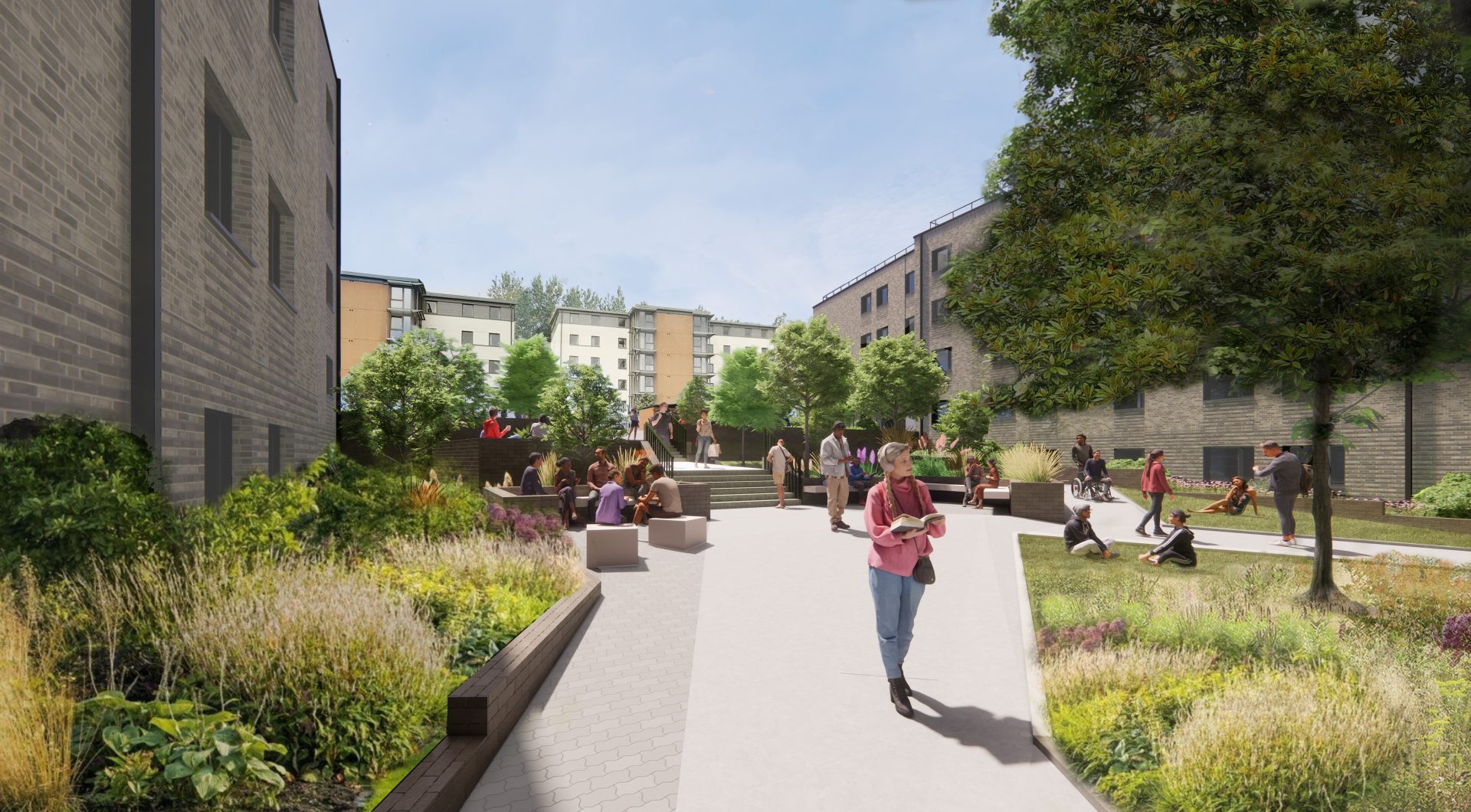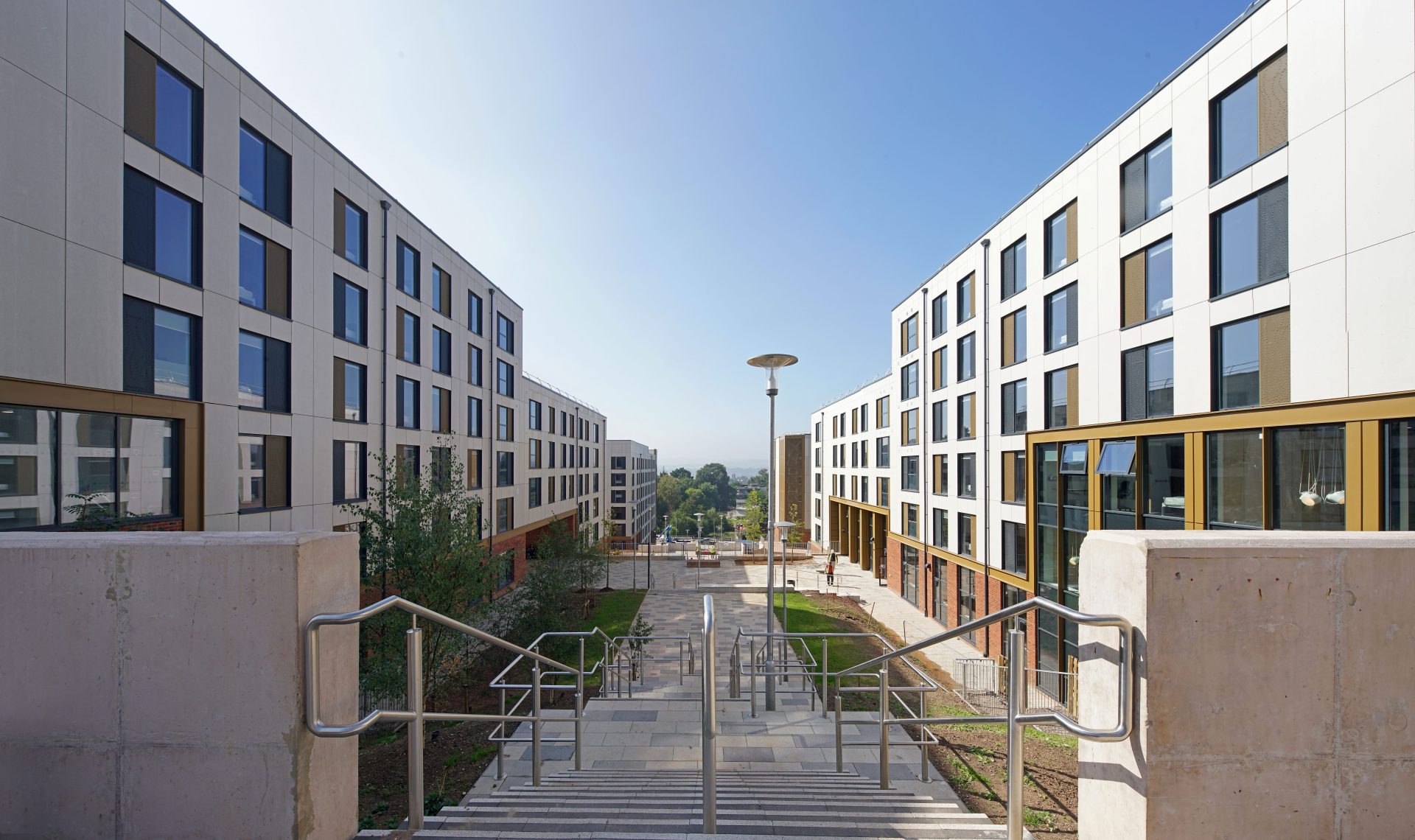17th August 2022
The Property Marketing Strategists (TPMS) with leading on-campus student accommodation provider UPP have conducted one of the largest pieces of research focused on the views of home by Gen Z asking over 2,500 16-25 year olds. In a post-pandemic world where hybrid learning has taken a real step change it finds that 47% of current students still want to be in student accommodation and living with their peers.
Just 3% of Gen Z want to live alone, 12% want to live with 2 others and 54% want to live with 3-4 others whilst studying. One of the key reasons for living together is to share the bills with some 74% citing this. Community is central to the experience of university, and we know that students perform better when they are in supported living environments – making purpose-built student accommodation the answer, second only to university campus accommodation. Another key component is integration within the local communities within which they live – some 50% of students say that taking part in non-student community events is important to them – from volunteering, shopping and socialising beyond campus.
Deenie Lee, co-founder of TPMS comments, “At the moment it appears there could be more effective collaboration between Purpose Built Student Accommodation (PBSA) providers, Universities and Councils. These bodies need to come together more effectively to create a better balance of accommodation options in the interests of young people, universities and local communities. We know that councils would like to manage more closely student-let HMOs. It is the PBSA sector that is best suited to provide this accommodation outside of University-campus accommodation, but these bodies could co-ordinate better in order to understand what councils, universities and students want from these homes.”
In 2020/21 there were 2.66 million students at UK higher education institutions, 750,000 students applied for full-time undergraduate places – a record high, despite concerns over Covid-19.
“More and more people are going to university” comments Deenie. “Whilst the debate about town v.s. gown debate is becoming increasingly vehement, our research shows that young people are keen to close this gap and play their part in their local community – 38% say they want to work or volunteer locally and 60% of students dine in independent restaurants and shop locally. We all know that being part of the communities within which we live supports our mental health: with an obligation to support wellbeing, universities could work more closely with PBSA providers to enable this.”
After studying, 38% of UK students are looking to rent where their career is likely to be. With PBSA acting as a precursor to BTR and co-living homes, both sectors can learn from each other regarding the most effective ways to create connected communities in and out of the home. So, like PBSA operators, BTR providers also need to work closely with councils to ensure these homes are aligned with local economic priorities and policies that help attract and create jobs for Gen Z.
“Our living environments have changed. As this study shows, only 3% want to live by themselves – meaning that the upcoming Gen Z has high standards when it comes to being part of a larger community, they have fewer barriers to sharing than past generations. These trends have to be integrated into the way that we create not only student but also post-university housing. As the global association of co-living professionals, we see over and over again how the concepts which truly stand out and resonate with residents are those that actually put effort in creating a communal experience, within and beyond the building walls. Ultimately, it all boils down to one question: how to make the resident feel part of something larger than themselves.” Comments Gui Perdrix director at Co-Liv.
PRESS RELEASE
DATE: 17th August 2022
PURPOSE BUILT STUDENT ACCOMMODATION PROVIDERS MUST WORK MORE CLOSELY WITH UNIVERSITIES TO CREATE HAPPIER STUDENTS AND COMMUNITIES
The Property Marketing Strategists (TPMS) with leading on-campus student accommodation provider UPP have conducted one of the largest pieces of research focused on the views of home by Gen Z asking over 2,500 16-25 year olds. In a post-pandemic world where hybrid learning has taken a real step change it finds that 47% of current students still want to be in student accommodation and living with their peers.
Just 3% of Gen Z want to live alone, 12% want to live with 2 others and 54% want to live with 3-4 others whilst studying. One of the key reasons for living together is to share the bills with some 74% citing this. Community is central to the experience of university, and we know that students perform better when they are in supported living environments – making purpose-built student accommodation the answer, second only to university campus accommodation. Another key component is integration within the local communities within which they live – some 50% of students say that taking part in non-student community events is important to them – from volunteering, shopping and socialising beyond campus.
Deenie Lee, co-founder of TPMS comments, “At the moment it appears there could be more effective collaboration between Purpose Built Student Accommodation (PBSA) providers, Universities and Councils. These bodies need to come together more effectively to create a better balance of accommodation options in the interests of young people, universities and local communities. We know that councils would like to manage more closely student-let HMOs. It is the PBSA sector that is best suited to provide this accommodation outside of University-campus accommodation, but these bodies could co-ordinate better in order to understand what councils, universities and students want from these homes.”
In 2020/21 there were 2.66 million students at UK higher education institutions, 750,000 students applied for full-time undergraduate places – a record high, despite concerns over Covid-19.
“More and more people are going to university” comments Deenie. “Whilst the debate about town v.s. gown debate is becoming increasingly vehement, our research shows that young people are keen to close this gap and play their part in their local community – 38% say they want to work or volunteer locally and 60% of students dine in independent restaurants and shop locally. We all know that being part of the communities within which we live supports our mental health: with an obligation to support wellbeing, universities could work more closely with PBSA providers to enable this.”
After studying, 38% of UK students are looking to rent where their career is likely to be. With PBSA acting as a precursor to BTR and co-living homes, both sectors can learn from each other regarding the most effective ways to create connected communities in and out of the home. So, like PBSA operators, BTR providers also need to work closely with councils to ensure these homes are aligned with local economic priorities and policies that help attract and create jobs for Gen Z.
“Our living environments have changed. As this study shows, only 3% want to live by themselves – meaning that the upcoming Gen Z has high standards when it comes to being part of a larger community, they have fewer barriers to sharing than past generations. These trends have to be integrated into the way that we create not only student but also post-university housing. As the global association of co-living professionals, we see over and over again how the concepts which truly stand out and resonate with residents are those that actually put effort in creating a communal experience, within and beyond the building walls. Ultimately, it all boils down to one question: how to make the resident feel part of something larger than themselves.” Comments Gui Perdrix director at Co-Liv.
“The university experience is becoming more and more a rite of passage as well as an education. The findings of this research, in tandem with those of the UPP Foundation’s Student Futures Commission, both evidence that students have been heavily impacted by a loss of community during the recent pandemic. This loss was not just of the community of their peers, but also engagement outside of campus. Universities and their students bring many positive benefits to communities across the country and these findings provide further evidence of the willingness of Gen Z students to engage, live and work in the communities within which they study.”
Jon Wakeford, Director of Engagement at UPP and Chair of the UPP Foundation added:
“The university experience is becoming more and more a rite of passage as well as an education. The findings of this research, in tandem with those of the UPP Foundation’s Student Futures Commission, both evidence that students have been heavily impacted by a loss of community during the recent pandemic. This loss was not just of the community of their peers, but also engagement outside of campus. Universities and their students bring many positive benefits to communities across the country and these findings provide further evidence of the willingness of Gen Z students to engage, live and work in the communities within which they study.”




























